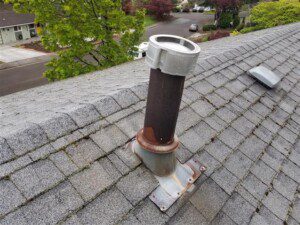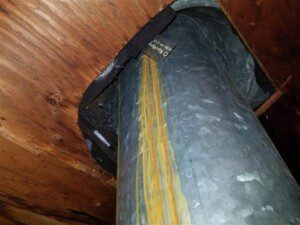
Most roof structures require ventilation, and in order for the ventilation to function properly, there needs to be ventilation outlets installed high towards the top of the roof. This is because passive ventilation (without the use of fans) relies on air convection, whereas air enters into the ventilated space through lower vents, and then exhaust out of the space through upper outlet vents. Therefore, most roofs have multiple passive vent penetrations.
Another type of common roof penetration is a metal flue pipe for a furnace or fireplace. Metal flue pipes typically have to vent through a roof, since they also rely on convection of air, and the vent pipe has to vent through and above the roof in order to prevent backdrafting of the combustion device it is serving. Modern flue pipes may be less reliant on the buoyancy of air, and have fans that help aid draft in flue pies, but these also have height requirements in many cases, so they are also vented through roofs.

Metal flue pipes often have a piece of flashing that mounts to the roof, and also an additional flashing, called the “collar” or “storm” flashing that is a circular piece of metal that is installed on the flue pipe itself. The collar flashing helps to prevent excess water from draining up against the metal flashing that is flat on the roof. The metal flashing that is mounted on the roof may be more prone to leakage, so a properly sealed collar flashing is necessary. The collar flashing should have sealant installed where it meets the flue pipe so that water does not leak behind it. A common defect found on older roofs is that the collar flashing sealant is missing or deteriorated. These roof components should be monitored and maintained over time to prevent water intrusion issues.
Check out the video below for more information about proper flashing installation of a metal flue pipe.
